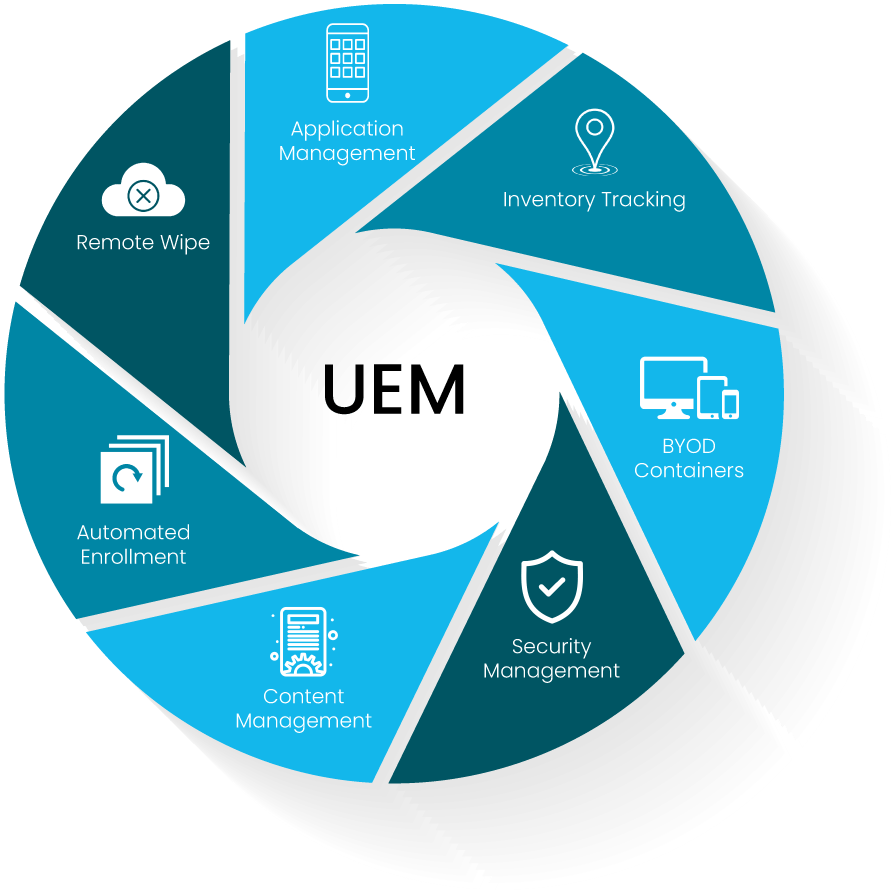Even during pre-COVID times, the enterprise mobility revolution was already well underway. Silicon Valley big names like Google and Facebook embraced remote working – or at least a hybrid model – as the best of both worlds. Many companies found that flexible work options delivered increased productivity, with the bonus of lean operations. For SMBs, the remote-work culture helped cultivate a positive work/life balance removing many of the stresses involved in corporate life – commuting, time away from family, and the costs associated with being at an office. One study shows that employee availability for SMBs goes up 19%, and life satisfaction rises 7% with a remote workforce. These factors are icing on the cake when companies of all sizes are looking for ways to bring costs down and create tight employee engagement while still finding ways to stay competitive.
Reconciling remote work and corporate security
This remote-work transformation has also added drastically to the complexity of most enterprise mobility programs. There’s more data, applications, and devices to manage, plus cybercriminals and phishing schemes are getting more stealthy. This combination is opening companies up to potentially dangerous security gaps.
So, where does that leave us? For many companies, the answer lies in mobility management solutions or services. These services can reconcile both the growing adoption of remote work and the need to secure corporate assets. Mobility management services meet these challenges because they cover all IT and process management steps required to acquire, provision, support, and secure mobile endpoints and data attached to them. One step further, Unified Endpoint Management (UEM) holds security practices at the core. It brings a coherent mechanism to integrate all mobile elements into a single platform. So, if you’re looking into mobility services, what do you need to know? Let’s dive into these topics to uncover useful nuggets when it comes to the modern mobile ecosystem.
Going somewhere? Don’t underestimate the migration process
It may be that you don’t know your mobility management program is subpar and underperforming. Your organization may have a highly-functioning manual or semi-automated process for managing mobile assets already in place. That might include device enrollment and a way to connect new devices to the corporate system, assigning enrollment profiles, enabling email accounts, and installing applications, for example. Regardless, the mobility services partner you’re working with should be capable of managing the transition from your existing tools and workflows into the new system. They should take the reins in managing the migration while taking precautions to cause little or no disruptions to how employees interact with their devices, co-workers, or how IT captures and monitors the mobile ecosystem.
Zeroing in on security goes without saying, almost
One of the primary reasons you’re probably considering mobility services or UEM is that your business is trying to keep the wolves away. Focusing on endpoint security isn’t just to protect the enterprise from phishing attacks via email or SMS; it prevents corporate data accessed daily on mobile devices from being leaked. Whether leaks stem from bad actors like hackers or lost or stolen devices, your organization needs to do its best to limit these liabilities. A third-party mobility services package can go a long way to closing security gaps because UEM platforms continuously monitor what employees are doing while using corporate apps and data repositories. However, when working with a mobility management vendor, make sure to explore all the security options they bring to the table. Does it work for your industry-specific requirements? What about single sign-on or identity management features? What about maintaining and securing sensitive client data? Setting up policies and safeguarding data before hitting the shaky ground can help you maintain a proactive and healthy security profile for customers and your workforce.
What UEM lacks in ‘cool factor’ it makes up for in substance
No company takes on the investment and effort of adopting a new mobility management system simply to become a technology superstar. It’s not like having the most recent iPhone or other latest responsive-design website. In other words, UEM’s ‘cool factor’ is relatively low. Instead, moving to enterprise mobility management is a prudent and necessary choice. It’s a severe undertaking meant to bring tangible ROI to the business – greater visibility across all mobile endpoints, securing corporate assets and data, and embracing the mobile era to drive employee engagement and productivity. UEM tools and mobility services that are intuitive, simple to use, and deliver value to IT and end-users will provide the most significant returns. Avoid vendors and products with complex workflows or those that require so much customization where everyone gets lost in the weeds. If you want help understanding what to look for in your mobility management services, call or email us! We’d love to sit down and hear what works and what doesn’t for your mobile management future.
brightfin’s experts can support your organization’s Unified Endpoint Management needs.



